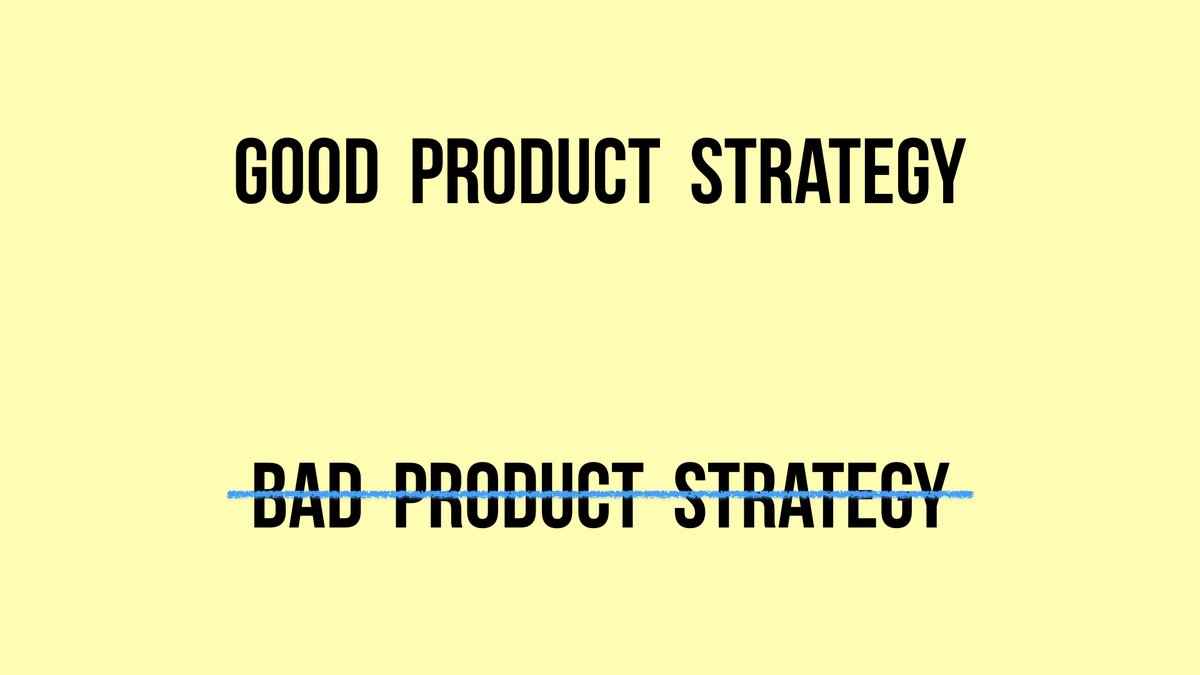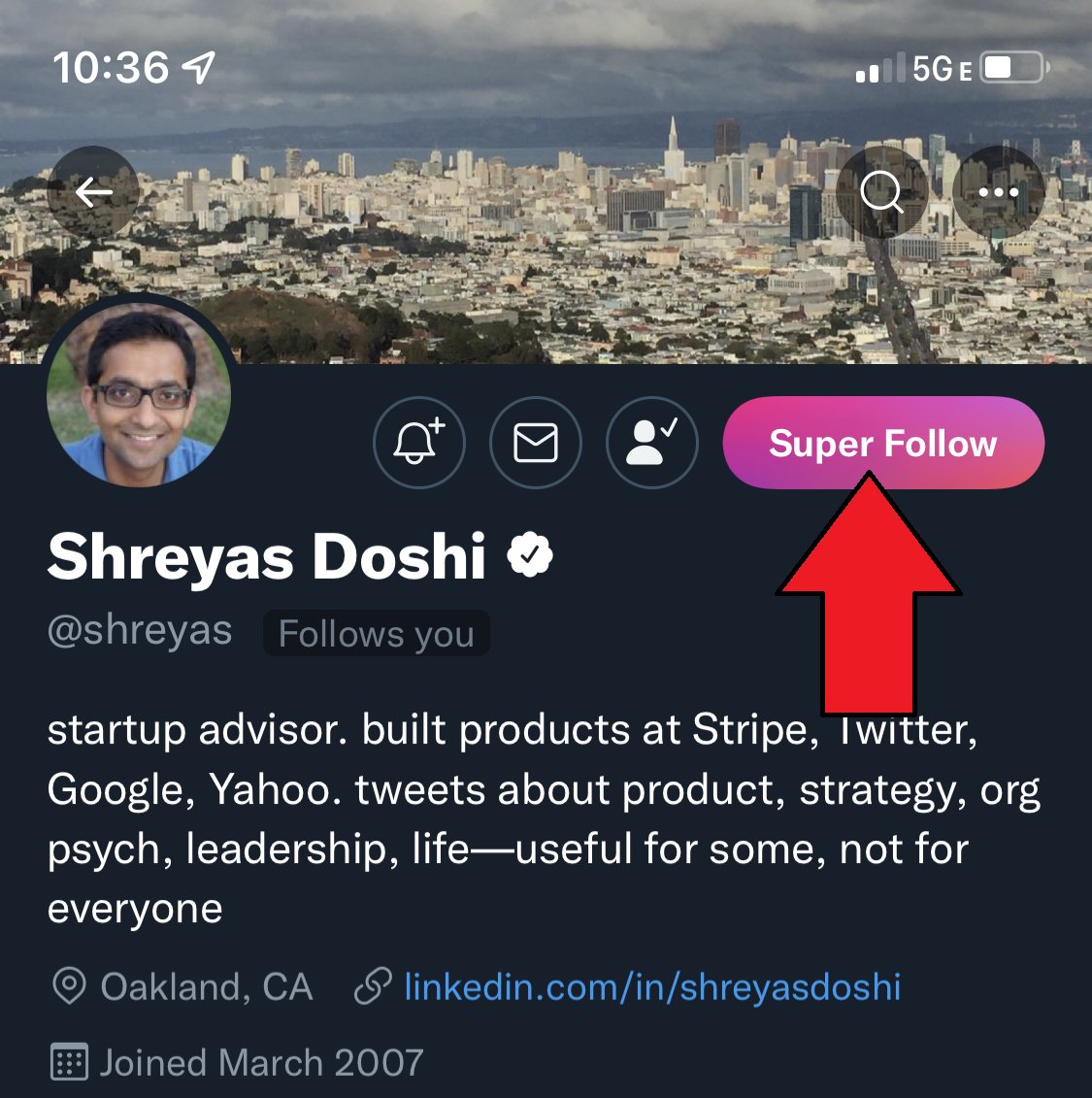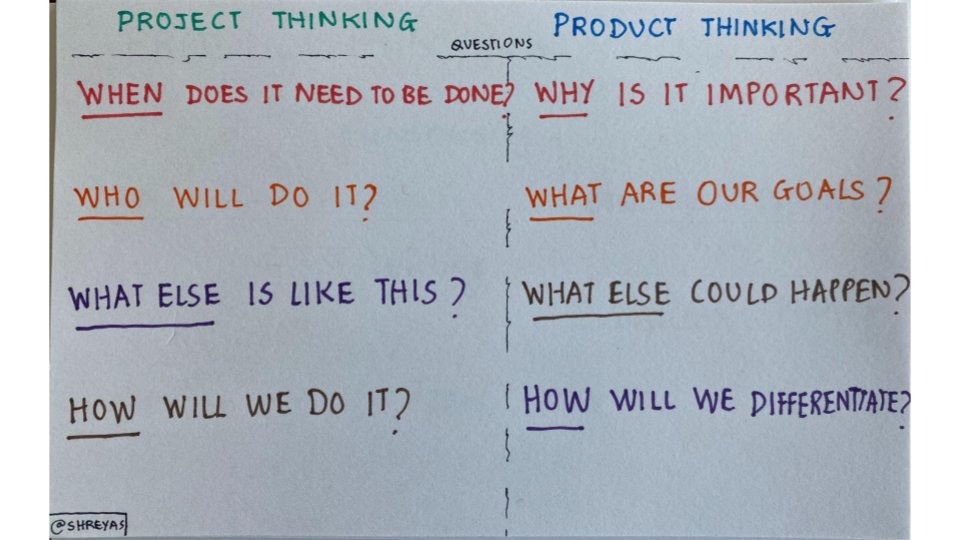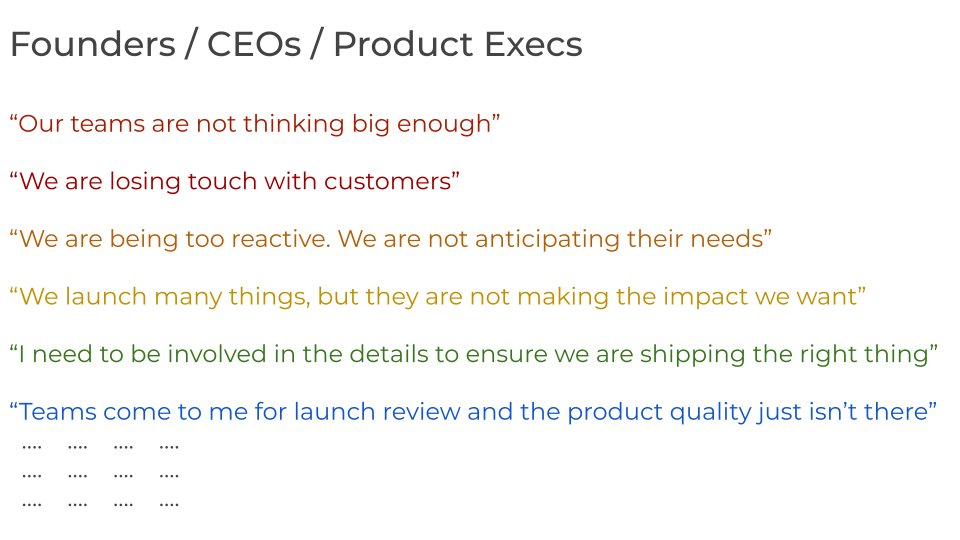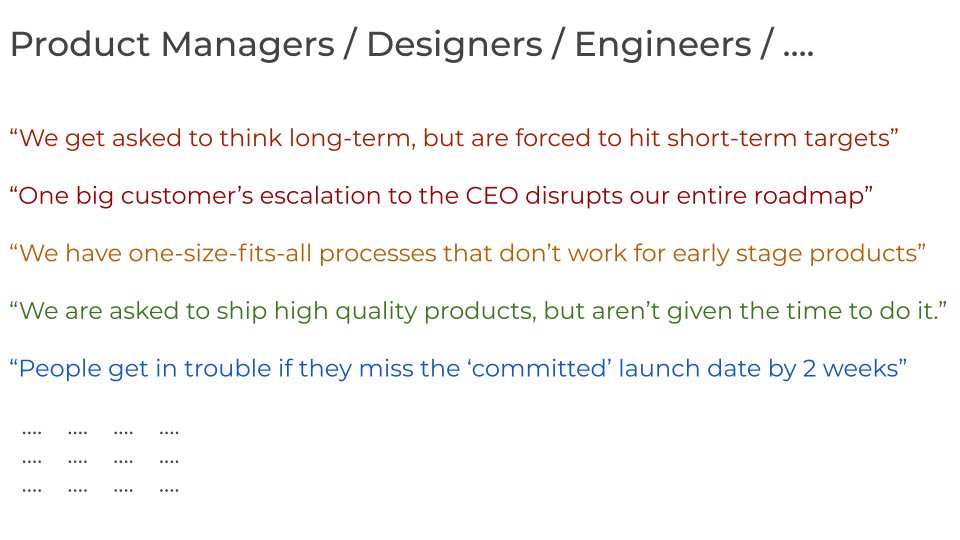
Good product strategy clearly identifies target customer segments and non-target segments.
Bad product strategy either ignores customer segmentation or attempts to cater to all customer segments.
Bad product strategy either ignores customer segmentation or attempts to cater to all customer segments.
Good product strategy presents an honest assessment of the market, the competition, and the product’s current position.
Bad product strategy either downplays the competition or ignores these factors altogether.
Bad product strategy either downplays the competition or ignores these factors altogether.
Good product strategy creates clarity on customer needs. Good product strategy is intentional and creative about tackling the right subset of those needs.
Bad product strategy presents a laundry list of priorities or “strategic goals” that attempt to tackle all customer needs.
Bad product strategy presents a laundry list of priorities or “strategic goals” that attempt to tackle all customer needs.
Good product strategy is intentional about whether to play head to head against incumbents or to play on a different turf entirely.
Bad product strategy defaults to one of these stances without a rigorous assessment of options and industry trends.
Bad product strategy defaults to one of these stances without a rigorous assessment of options and industry trends.
Good product strategy highlights trade-offs and lays out the rationale for said trade-offs.
Bad product strategy eschews trade-offs and tries to be “all things to all people”.
Bad product strategy eschews trade-offs and tries to be “all things to all people”.
Good product strategy builds upon the company’s existing advantages (companion products, distribution channels, partner relationships, etc.).
Bad product strategy either ignores these advantages or overestimates their potential impact on the product’s success.
Bad product strategy either ignores these advantages or overestimates their potential impact on the product’s success.
Good product strategy increases chances of success by largely relying on the company's long-lasting advantages.
Bad product strategy relies on factors that might be a current source of advantage but are over time more susceptible to getting neutralized by the competition.
Bad product strategy relies on factors that might be a current source of advantage but are over time more susceptible to getting neutralized by the competition.
Good product strategy meaningfully differentiates the product in the market.
Bad product strategy makes proclamations about wanting to be “the best”, “most delightful”, “world-class” etc. without adequately specifying the concrete product choices that will make it so.
Bad product strategy makes proclamations about wanting to be “the best”, “most delightful”, “world-class” etc. without adequately specifying the concrete product choices that will make it so.
Good product strategy identifies leading and lagging indicators of success, whether they are metrics or milestones.
Bad product strategy either ignores success indicators or misses the leading indicators.
Bad product strategy either ignores success indicators or misses the leading indicators.
Good product strategy clearly presents its positive effect on the company, in terms of the company metrics impacted and the assets created or amplified.
Bad product strategy doesn’t provide a rigorous point of view on company-level upside.
Bad product strategy doesn’t provide a rigorous point of view on company-level upside.
Good product strategy is cognizant of the importance of execution. It prompts org-wide decisions and action by mapping the proposed product choices to a high-level action plan and associated risks.
Bad product strategy doesn’t map the proposed choices to cohesive actions.
Bad product strategy doesn’t map the proposed choices to cohesive actions.
Good product strategy provides company executives with a fresh perspective on the domain and the product.
Bad product strategy attempts to conform to executives’ pre-existing opinions about what should be done with the product.
Bad product strategy attempts to conform to executives’ pre-existing opinions about what should be done with the product.
Good product strategy is inspiring because it’s vivid, rigorous, and actionable.
Bad product strategy tries to sound visionary and ambitious, usually by employing Rah-Rah language and Apple Pie positions. Bad product strategy often reads like a prayer.
Bad product strategy tries to sound visionary and ambitious, usually by employing Rah-Rah language and Apple Pie positions. Bad product strategy often reads like a prayer.
https://twitter.com/shreyas/status/1231455889019699200
Good product strategy emerges from deep, nuanced thinking, but is articulated such that it’s easy to remember and repeat.
Bad product strategy is fluffy or abstruse.
Bad product strategy is fluffy or abstruse.
Good product strategy optimizes for long-term business results.
Bad product strategy optimizes for near-term consensus.
Bad product strategy optimizes for near-term consensus.
It is not easy to create a good product strategy, but it is well worth the effort.
Must-read books on strategy:
1. Understanding Michael Porter, by Joan Magretta
2. 7 Powers, by Hamilton Hemler
3. Good Strategy / Bad Strategy, by Richard P. Rumelt
(most of the ideas above have been synthesized from these three books)
1. Understanding Michael Porter, by Joan Magretta
2. 7 Powers, by Hamilton Hemler
3. Good Strategy / Bad Strategy, by Richard P. Rumelt
(most of the ideas above have been synthesized from these three books)
If you want to read this content all at once, check out my first Medium post here:
link.medium.com/gub6e9C8h5
link.medium.com/gub6e9C8h5
What did I miss? Reply with your thoughts below.
• • •
Missing some Tweet in this thread? You can try to
force a refresh

